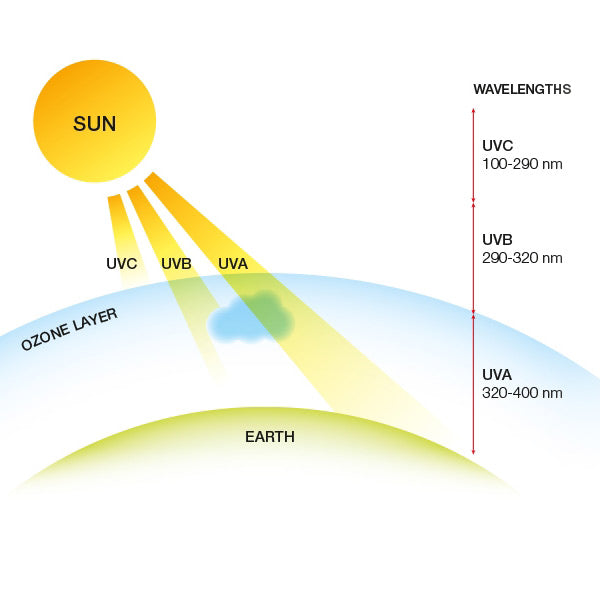The Visible Light Spectrum and Aviator Sunglasses
Electromagnetic waves are similar to ocean waves. We use them every day, and without them, the world we know would not exist.
They range from Gamma rays to X-Rays to Ultraviolet rays to Visible Light Waves, even longer Infrared Waves, Microwaves to Radio Waves which can measure longer than a mountain range.
This spectrum is the basis of the information age and of our modern world.
Visible Light
Our eyes perceive leaves as green because wavelengths in the green region of the visible spectrum are reflected while other visible wavelengths are absorbed.
Yet the chlorophyll and the cell structure of the leaf are also reflecting near-infrared light we cannot see.
Light passing through a prism will be split into different colors ranging from red to violet, depending upon how “bent†the light ray is bent.
All of the colors combined will result in white light, while the absence of light is black.
A precision ground glass lens will allow all of the colors reflected off objects to enter our eyes just as though there was nothing between our eyes and the object.
Visible Light Video
Why Is This Important?
This is important because when wearing glasses or sunglasses you want all of the objects seen through the lens are precisely the same as if there were no lens between your eyes and the object.
This is why glass lenses that have been appropriately ground provide absolute true color reception, while plastic or polycarbonate lenses introduce some distortion, particularly at the edges of the lens.
In addition, light rays will interact with the molecular structure of the plastic or polycarbonate lenses, introducing some alteration of color reception.
Performance vs. Cost
When considering a pair of aviator sunglasses, it is essential to understand the characteristics of visible light and how it can affect the cost of the sunglasses.
It is also essential to understand that one of the most important considerations when purchasing a pair of sunglasses is the VLT (Visible Light Transmittance) value of the lens.
This is the amount of light allowed to pass through the lens and reach your eyes. Ideally, the VLT value should be around 16%; this means that the tint applied to the lens will block 84% of the visible light from reaching your eyes.
The aviator sunglasses we offer on this website have excellent lenses that provide absolute true color reception and a VLT value of approximately 16%.
Visit our Shop to see all of our offerings. Keep your eyes cool and protected today, my friend!







Leave a comment
This site is protected by hCaptcha and the hCaptcha Privacy Policy and Terms of Service apply.